Undiscovered treasures of Russia, who can get rich
These mysterious treasures one thing in common: their existence can not be doubted, it is documented and it is practically impossible that they have found, because they do not get to keep secret the discovery of such large and unique values. Russia - not the Caribbean Sea, but it has a huge area and turbulent history with many wars and unrest. Golden Horses Batu Khan, treasures of King Sigismund and Emperor Napoleon, Stepan Razin and Pugachev waiting in the wings. And future billionaires who find them.
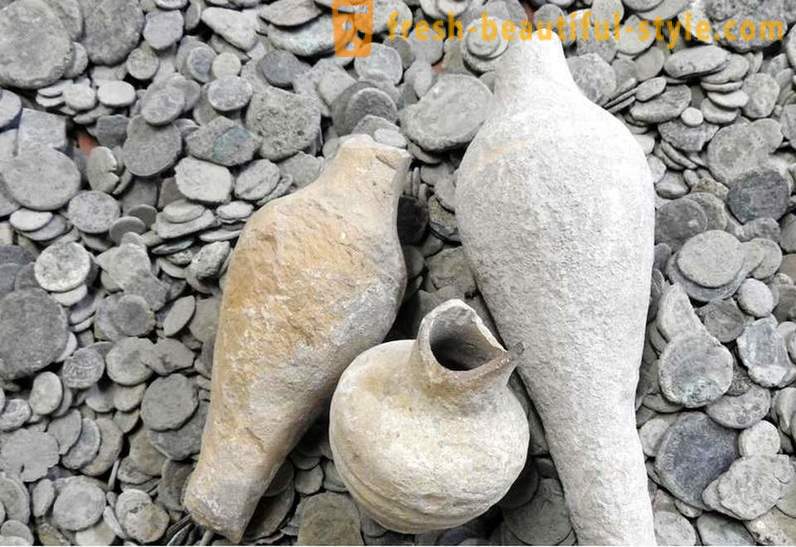
The suitcase with jewelry Bosporus
In 1926, at the burial on the Kerch Peninsula were found and handed over to the Regional Historical and Archaeological Museum Treasures III-V centuries AD, among them - gold and silver coins times the Pontic King Mithridates VI Eupator, pantikapeyskie and Bosporus gold coins, jewelry, and more more.
In September 1941, when there was a serious threat to the occupation of the Crimea by German troops, the museum's director and party secretary laid gothic collection in plywood suitcase and together with the other evacuees exhibits a ferry transported him across the Kerch Strait, and then by car to the Krasnodar and finally to Armavir . The "gold suitcase" was 719 items of gold and silver weighing about 80 kg. The building, which housed evacuees values, was completely destroyed in the bombardment, when the Wehrmacht was already completely surrounded the area. In the 1980s, researchers found that the keepers had to take out the suitcase again - this time to the partisans in the village with the speaker called calm. Precious suitcase looking in the Krasnodar region until now.

Golden Horses Batu Khan
According to legend, two gold horse with ruby eyes adorned the main gates of the capital of the Golden Horde. After the death of his beloved Arabian horse Batu Khan ordered to cast it in gold, in full size. Like his illustrious grandfather, Genghis Khan, Batu Khan took his favorite horse in all the trips, but did not go on it: in the fast paced steed Khan invisibly accompanied the war god.
Two horses because Baty decided two equestrian statues at the gates of the capital city will look better, and captive in Kiev Russian bell-master cast from collected for the year Mongols tribute exact copy of the first horse.
He succeeded his brother Batu Khan Berke suffered a statue in its capital, is situated in the current of the Volgograd region. They disappeared when Mom: after the Battle of Kulikov Horde began to retreat to the south-east and far they could not steal. It is believed that one golden horse buried with Mom, and look for it must be in one of the countless mounds Volgograd and Astrakhan steppes. But where the second horse? In the Volga Cossack villages there is a legend about the abduction of a golden horse Cossack detachment that captured aces Khan's capital, but could not hold her back and walked away, grab a golden statue. With this burden gone far it was impossible, and the Cossacks, before you die by the hands of the Horde, hid her - probably in the nearest river.

GOLD Zygmunt III
In the Time of Troubles in Russia was a huge amount of treasure buried, as evidenced by numerous finds dating from the XVI-XVII centuries.
"I sent from Moscow with different good 923 carts in the Kaluga Gate Mozhaysk ..." - the beginning of "pantry record" compiled, according to legend, King of Poland Sigismund III. It is believed that the original recording, made "on copper board" in Latin and Polish, is located in Warsaw, and secretly made a list of her widespread among Russian hunters. Poles with the consent of the Boyar Duma occupied Moscow, and all Mozhayskaya road from the capital to Smolensk controlled by the Polish garrison. A short period of "peaceful" occupation ended the uprising in March 1611 - Poles brutally crushed it, and burned and looted Moscow. Production - the money from the royal treasury, crowns, jewels, vessels, icons salaries - went to Poland, but the road was buried at a certain Nicholas churchyard. Sigismund treasure tucked away in a small cave. Signs of very detailed: 650 meters from the churchyard of St. Nicholas Lapotnogo, which stands on Khvorostyanka river nearby bulk Hall, upland meadow, a well with a spring and boulders. However, the treasure has not yet been found. It is believed that the required space is either under Borodino, or closer to Moscow, in the vicinity of Aprelevka.
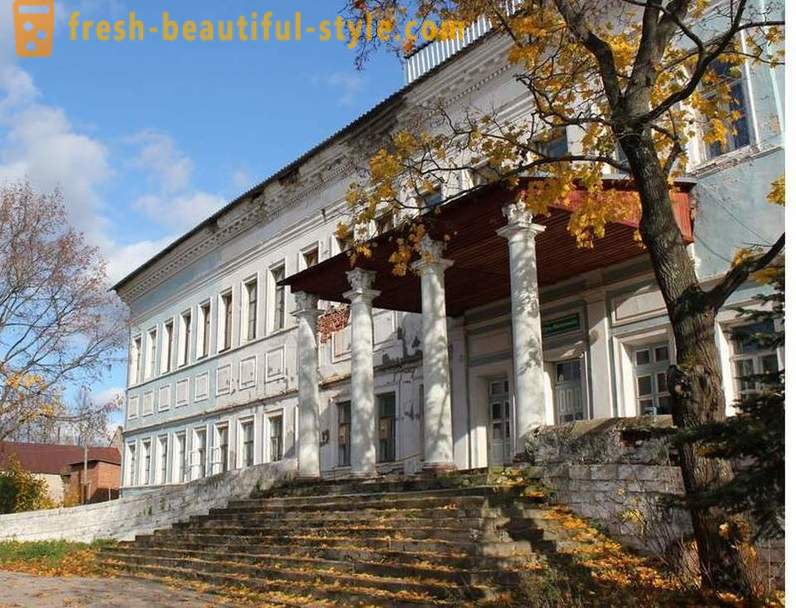
to
Treasure in the Eagle's Nest
In the second half of the XVIII century, a rich Tula breeder Andrew Batashev founded the village in the Ryazan region Gus-Iron to develop iron ore deposits, built a factory and a grand estate called Eagle's Nest. More richer, Batashev handed control of the affairs of his brother and focused on the construction of the estate. It is also often visited Moscow - according to contemporaries, frankly littering money. Perhaps he was involved in robbery: Despite the claims of Batashev elimination of all gangs in his lands, looting convoys continued carriageways and roads province were among the most dangerous. Three hundred peasants evicted at work inside the estate - is believed to be for the construction of underground tunnels and caches - disappeared.
Batashev patronized by Prince Potemkin, the second man in the state during the reign of Catherine II. After Potemkin's death in the Eagle's Nest came a government commission, which among other things, sought nothing less than the secret mint. No evidence was found of any illegal production, no significant cash. The Commission has left with nothing, and Batashev cut contacts with the outside world to a minimum. He died in 1799, leaving behind almost no material assets - and in fact contemporaries were convinced that he had amassed a huge fortune. Now the Eagle's Nest has a status of a state historical monument, and the excavations there impossible. However, the treasure can be hidden out of the estate.
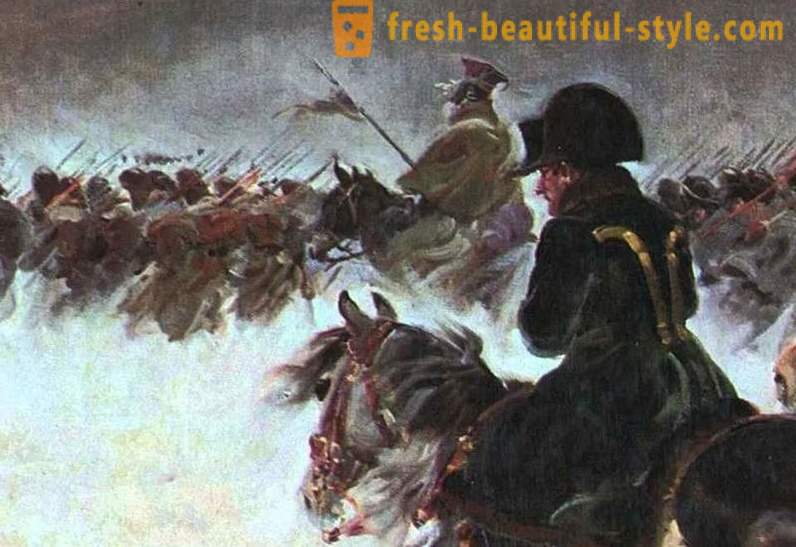
The treasure of Napoleon Bonaparte
At the end of October 1812, Napoleon left looted and burned Moscow. French army officer said: "The emperor ordered to take out all the Kremlin's trophies, collect diamonds, pearls, gold and silver of the churches. He even ordered to remove gilded cross from the dome of the Ivan the Great. The most elegant and luxurious carriage drove interspersed with wagons and carts droshky with provisions. " According to official estimates of the Russian Ministry of Internal Affairs, "Muscovite production" amounted to about 18 tons of gold, 325 tons of silver, and an undefined number of church utensils, icons in gold frame, old weapons and fur. Own carts with prey had Napoleonic marshals.
In the first days after the release of the French from Moscow it was relatively clear weather, but soon the rains have washed away roads. Even before reaching the Mozhaisk, Napoleon ordered to give up part of carts and wagons left to burn. With gold and silver to leave until no hurry. The entire hike to the border accompanied by the continuous attacks of Cossacks and partisans, and with the onset of the harsh winter had to quickly hide the loot. It is believed that most of the treasure was sunk in a lake in the west of the Smolensk region. According to the adjutant of Napoleon - perhaps deliberately false - it Semlevskoe lake.
The search in the lake have been conducted since the mid XIX century, when the Smolensk governor-general drove hundreds of peasants ransacking the bottom hooks. Unsuccessful search was interrupted, but since then and to this day on the lake are literally living generation of enthusiasts trying to find the value of the water or sweeping the coast in the hope of stumbling on some kind of omen treasure. With a maximum depth of the lake in Semlevskogo last 21 meters to 15 meters fall on the mud, and the visibility at the level of five meters is already zero.
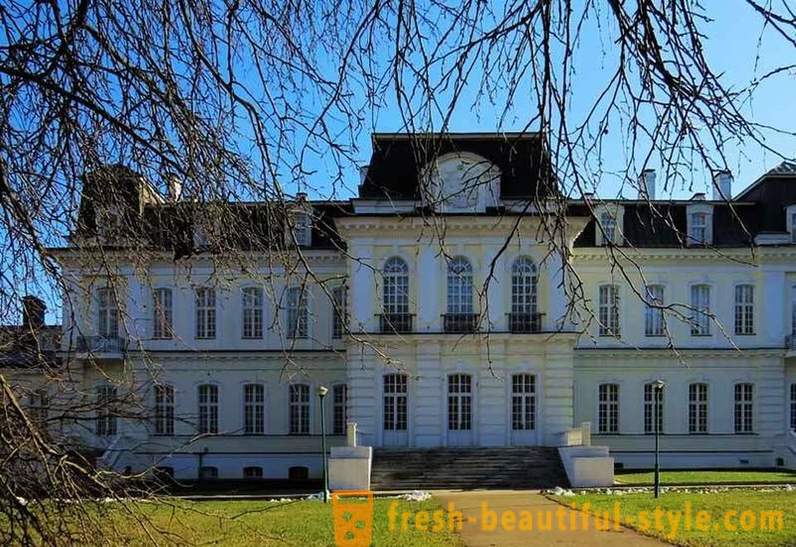
Count Rostopchin Wealth
Moscow estate Voronovo during the War of 1812 was the residence of the governor-general of Moscow, Count Rostopchin, who, according to contemporaries, made of his estate "little Versailles". From Europe were brought here paintings, statues, vases. By order of Kutuzov passed Rostopchin Moscow Napoleon's troops, and during the retreat set fire to his palace and put such a message: "The French! In Moscow, I left you my two houses and movable half a million rubles, here you will find one the ashes. "
It is believed that Rostopchin destroyed all his fortune, but his contemporaries point to the unusual behavior of the Count: he was famous for hospitality, but in the last days before the retreat did not invite anyone to his estate from the headquarters, located near the estate. It is also strange that Rostopchin did not send any values to their serf peasants and sent to another of his estate in Lipetsk province. He personally set fire to the mansion, and died in the fire, even the marble statues.
In 1980 on the territory of Raven discovered a long underground passage height of over two meters. Vaults eventually threatened to collapse, and in order to avoid accidents turn covered with earth. Thus, there really is Raven underground tunnels, but large-scale search on the estate has not yet been carried out.

Gold from the ship "Varyagin"
Combi steamer ship "Varyagin", named for the owner's name, sank in the Ussuri Bay near Vladivostok, October 7, 1906. The reason was the naval mine, drift since the Russian-Japanese War. Saved only 15 people out of 250, including the captain. The petition to the Governor-General representatives Varyagina requested in exceptional circumstances compensate carried in a vessel of 60 thousand rubles in gold, as well as other "particularly valuable cargo." The petition was rejected, but in 1913, the captain of the ship organized an expedition to lift the debris. The ship found, but not enough to lift the strength or the technical means. Re-expedition prevented the storm, then the First World War broke out, and then came the revolution. Since then, attempts to raise "Varyagin" have been taken.

Gold of Admiral Kolchak
At the beginning of the First World War, a part of Russian gold reserve was moved to Kazan. During the Civil War, he was captured by the army of Admiral Kolchak, who proclaimed himself the supreme ruler of the state. Kazan gold transferred to Omsk, where the State Bank has estimated its value at 650 million. Gold rubles.
After the defeat and death of Kolchak in 1921, the remnants of his troops gave gold Soviet power in exchange for guarantees of unimpeded departure from Russia. But it turned out that the number of bars has decreased significantly. The fate of about 250 million. Gold rubles unknown. Some researchers believe that the gold remained in the Omsk province is one part in the underground passages beneath the building of the State Bank, the other - buried near the town. According to another version, the gold was sent to Vladivostok, but it had to unload at Taiga station near Kemerovo and buried. In 1941, before the war, the NKVD conducted several unsuccessful excavations in this area witnessed prisoners. Hunters still leave no hope of finding treasures Admiral.
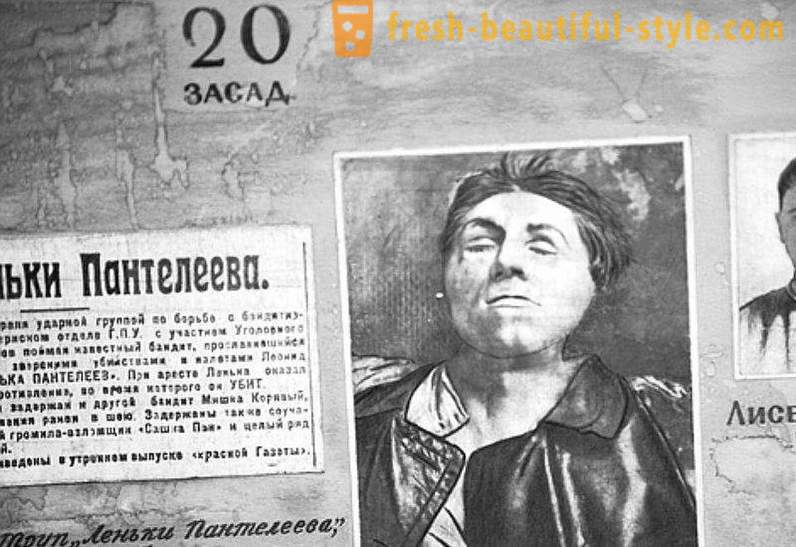
The treasure Panteleev bandit
About St Petersburg's famous bandit Lyonka Panteleyev is little known. The first known fact - ordinary service in the Red Army. In 1922 he entered the Petrograd Cheka, quickly made a good career, and just as quickly was dismissed. He leaned into crime and became one of the most dangerous robbers of the Time of Troubles. Panteleev robbed exclusively Nepmen, but not from noble motives, but because the business was the only estate of a wealthy but the party members, and for robbing the powers or attack on a bank branch could pay much more. Soon Panteleev was caught and found himself in the cross, but in November 1922, produced the first and only one in the history of this prison a successful escape. He quickly decided to loot as much as possible and go abroad. Within two months of his gang committed 35 armed attacks to murder, taking money, gold, jewelry and other small-sized value. Panteleev escape from the USSR did not have time: in February 1923, he was tracked down and shot during the arrest. Loot disappeared without trace - it is believed that it is hidden in the numerous caves of St. Petersburg, perhaps in the underground passages of the famous Ligovka or in the basements of the Alexander Nevsky Lavra. Diggers often find there caches of weapons, master keys and the like, but so far no attack failed on the trail of the treasure.

Smolensky Bank Values
During the Second World War was lost many values. Some of them were hidden from the enemy and subsequently returned to the store, but some disappeared.
So, from the border of Smolensk bank values were evacuated almost at the last moment. There were so many that it took 8 trucks. These included gold bullion, gold and silver coins, banknotes. It was decided to send a convoy along the old Smolensk road in Vyazma. During the crossing of the Dnepr's motorcade came under fire and the village Otnosovo, located 20 km west of Vyazma, drove five cars of the eight. Their fate is unknown: Vyazma very soon was captured by the Wehrmacht.
It is assumed that the column command came to the conclusion that because the export value of the environment is no longer possible, then you need to burn paper money and gold and silver bury. The main argument in favor of this - the fact that after the war in Otnosovo many silver coins issue was discovered in 1924, emerging from treatment long before the war. However, the treasure is still not found.













































